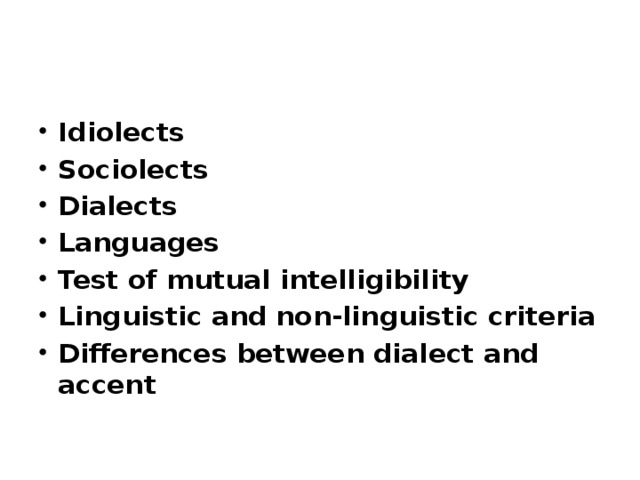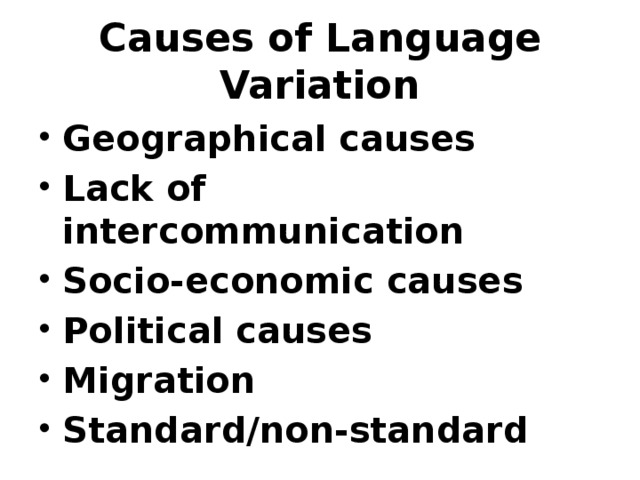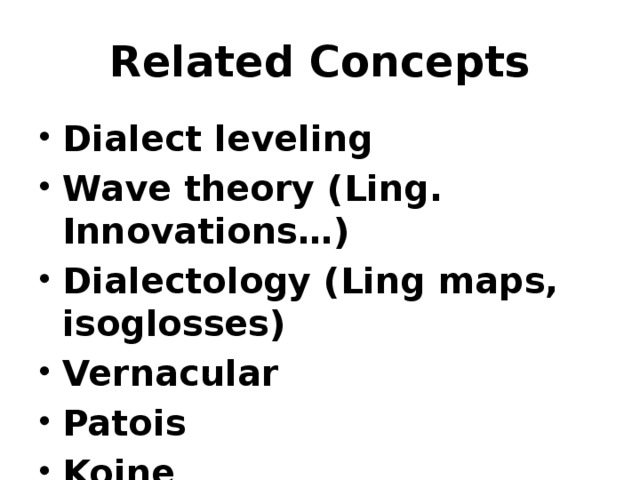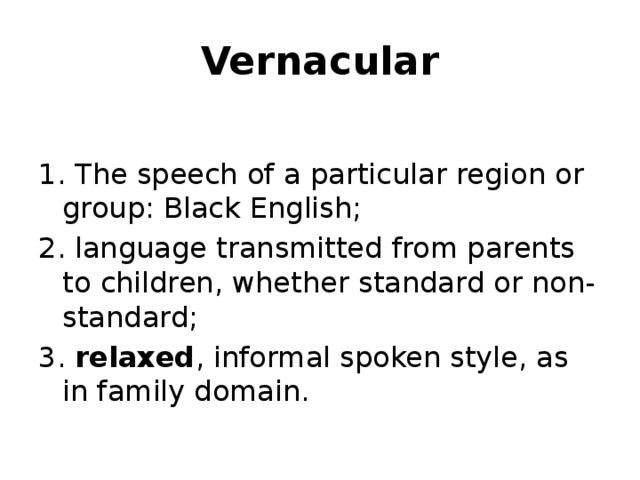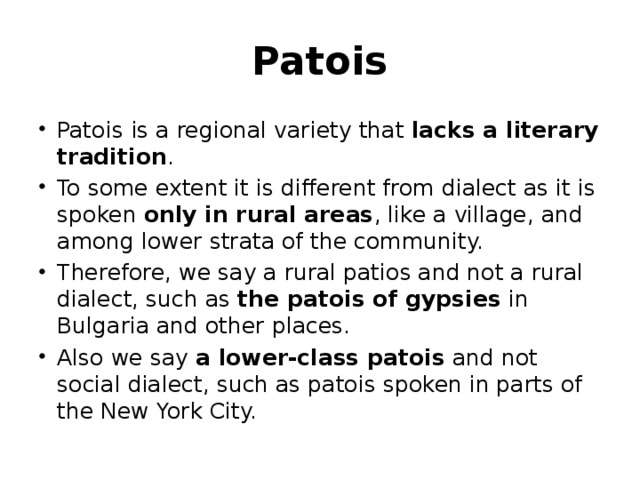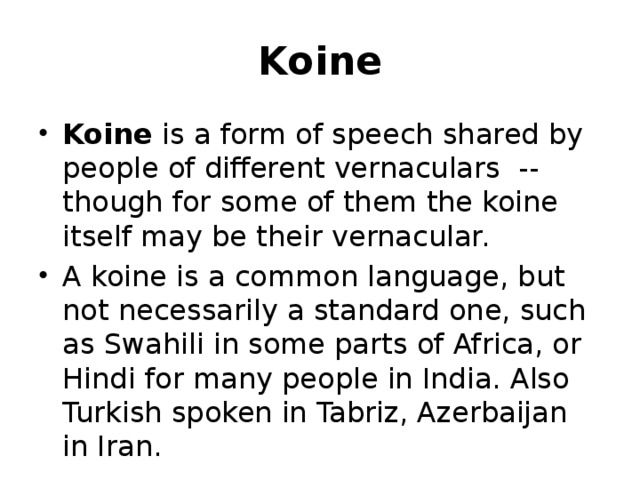•Idiolects
Between the speakers of any language there is variation in the way that they use their language. This variation is demonstrated by linguistic differences in terms of sound (phonetics) and structure (grammar). There might be only slight variations between forms of a language – such as minor pronunciations of words or a slight changes of grammatical structure that do not inhibit intergroup communication. Sometimes there are differences between the speech of men and women, different social classes, and differences between age groups. People will identify some of these features as marking the "best" or most "beautiful" form of the language, other features will be considered nonstandard or undesireable. Some of these differences may impede intelligibility and intergroup communication.
The study of language variation guides language development activities. For example, when developing a writing system it is desireable for it to be useful and acceptable to the largest number of speakers of the language. Therefore, it is important to identify the most unifying features of the language.
•
Sociolects
•Dialects
•Languages
•Test of mutual intelligibility
•Linguistic and non-linguistic criteria
•Differences between dialect and accent
•Geographical causes
•Lack of intercommunication
•Socio-economic causes
•Political causes
•Migration
•Standard/non-standard

